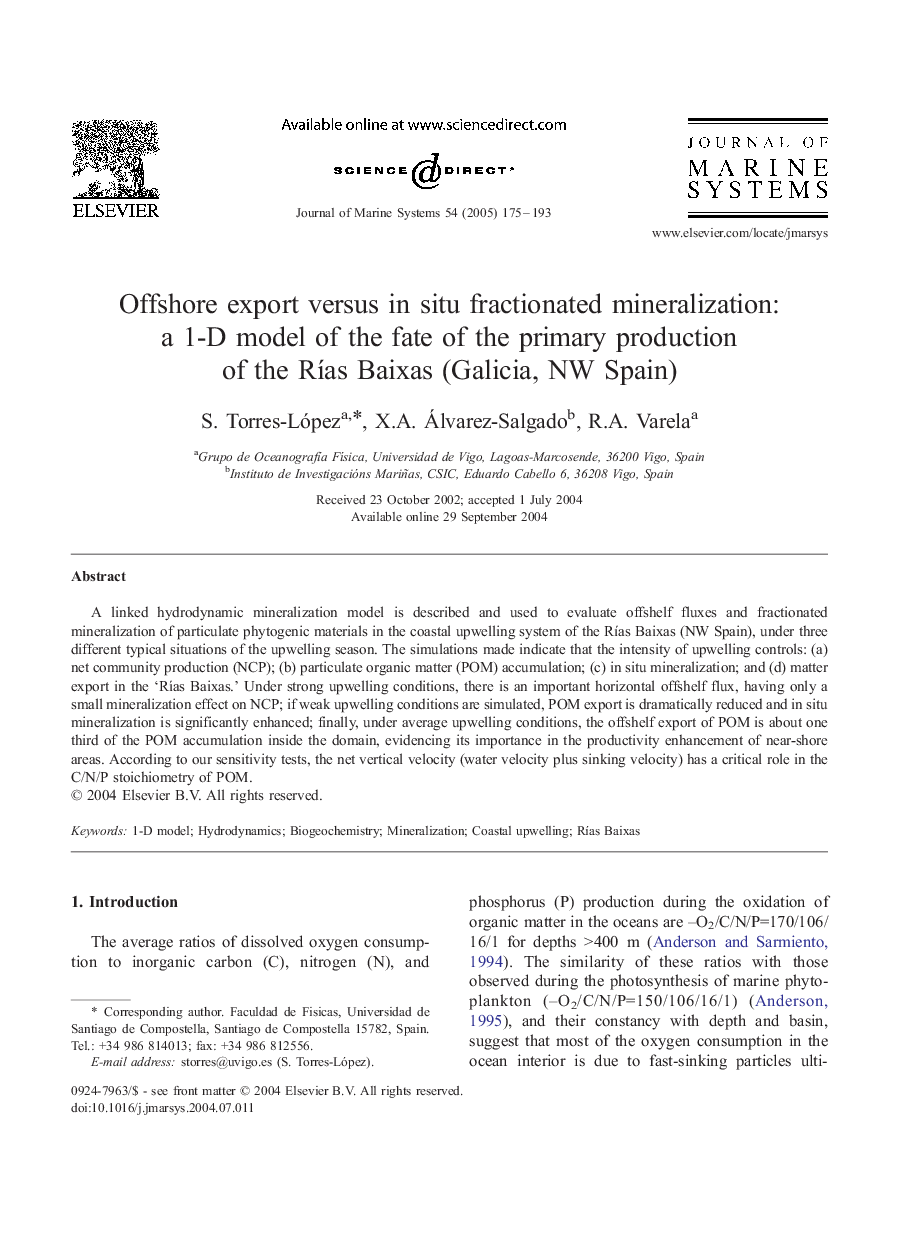| Article ID | Journal | Published Year | Pages | File Type |
|---|---|---|---|---|
| 9483448 | Journal of Marine Systems | 2005 | 19 Pages |
Abstract
A linked hydrodynamic mineralization model is described and used to evaluate offshelf fluxes and fractionated mineralization of particulate phytogenic materials in the coastal upwelling system of the RÃas Baixas (NW Spain), under three different typical situations of the upwelling season. The simulations made indicate that the intensity of upwelling controls: (a) net community production (NCP); (b) particulate organic matter (POM) accumulation; (c) in situ mineralization; and (d) matter export in the 'RÃas Baixas.' Under strong upwelling conditions, there is an important horizontal offshelf flux, having only a small mineralization effect on NCP; if weak upwelling conditions are simulated, POM export is dramatically reduced and in situ mineralization is significantly enhanced; finally, under average upwelling conditions, the offshelf export of POM is about one third of the POM accumulation inside the domain, evidencing its importance in the productivity enhancement of near-shore areas. According to our sensitivity tests, the net vertical velocity (water velocity plus sinking velocity) has a critical role in the C/N/P stoichiometry of POM.
Related Topics
Physical Sciences and Engineering
Earth and Planetary Sciences
Oceanography
Authors
S. Torres-López, X.A. Álvarez-Salgado, R.A. Varela,
